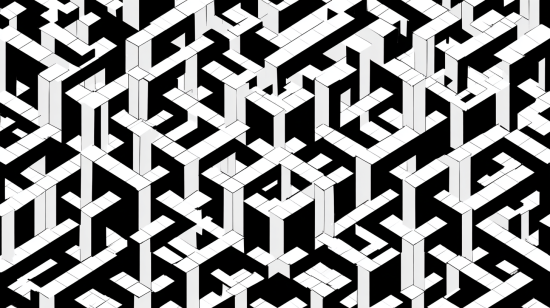
In 2025, the energy industry is under extraordinary pressure. Demands for decarbonization, growing demand for "green" energy, and digitalization of infrastructure are creating a perfect storm for industry transformation.
Energy sector companies are now experiencing an era of transformation, trying to align demands from consumers with their technological capabilities.
In 2025, grid operators and energy companies are actively collaborating with data centers and government structures to modernize networks.
Old grids, outdated IT infrastructure, and weak connection with end consumers are becoming bottlenecks that require modernization of existing approaches.
Why is this more important now than ever? Because energy demand is growing: electric vehicles, AI data centers, "smart" homes... they all need electricity.
A lot of it. And old systems simply won't withstand such loads. So let's talk about this further.
ALSO READ: Best AI Tools for eCommerce Businesses (2025 Guide)

For years, the energy sector was viewed through a purely engineering lens — circuits, substations, and megawatts. But that perspective has shifted. You can see it in the conversations dominating major industry events.
At the 2025 Pacific Power Association conference, for instance, the spotlight wasn’t on hardware upgrades but on digital grids and the role of software in stabilizing supply.
Events like Digitalization and AI in Energy Appalachia echo the same message: data and machine learning are no longer experimental tools; they’re becoming the backbone of how utilities operate. The industry’s center of gravity is gradually moving toward IT — and the implications are worth unpacking.
Remember how an inspector used to come to read your meter? Modern smart meters are small computers that constantly transmit consumption data. They know when you have peak consumption, when you go on vacation, when the washing machine is running. Inspectors no longer have reasons to go door-to-door.
Energy companies see in real-time exactly where grid overload occurs and who consumes how much. They can instantly redistribute power or disconnect non-priority systems. Devices like smart meters transmit data to IT systems for predictive maintenance and performance optimization.
DXC Technology, which provides energy and utilities industry solutions, together with German company HanseWerk created an intelligent energy consumption monitoring system. This allowed not only to reduce costs but also to predict accidents before they occur.
The benefits for everyone are obvious: businesses save money on maintenance, users pay less for electricity, the world gets less CO2 emissions. Win-win-win.
Previously, companies built huge server rooms that cost as much as an airplane wing. Now a huge portion of companies are moving data storage and processing to cloud technologies.
Cloud solutions, SaaS and PaaS allow energy companies to avoid capital investments in physical data centers. You only pay for what you use — like Netflix, but for corporate systems.
Want to quickly launch a new service for clients? Much of what used to require physical installations can now be launched in the cloud in a matter of days. If a utility wants to see whether an AI-based demand forecasting model could actually help, it can simply rent the computing power, run a pilot, and shut it down just as easily.
And AI has reached here too! How does it help the Energy Sector with twins?
A digital twin is a virtual copy of a real object, in our case a power plant, transformer substation, or even an entire power grid. You can test various scenarios on it without risking real equipment. For example, there's a power plant. Its digital twin works in parallel, analyzes all data from sensors and says: "Hey, in two weeks you might have a failure on turbine number 3, better do preventive maintenance now." And the company does — and avoids an accident that could cost millions and leave an entire city without power.
New research points to the concept of Agentic Digital Twins — these are next-generation digital twins that integrate large language models for autonomous decision-making, active interaction, and social integration into energy management systems.
According to EY, 50% of companies in the oil & gas and chemical sector already use digital twins for asset management, and 92% are either implementing, developing new applications, or planning to do so within the next five years.
If you thought Blockchain is only about cryptocurrencies, then no. In energy, it opens completely new possibilities.
There's such a concept — "prosumer" (from producer + consumer). This is a person who both produces energy (say, has solar panels on the roof) and consumes it. Previously, if you had surplus energy, you could at most sell it to the state energy company for pennies.
Now with blockchain, you can create local energy markets. Your neighbor needs electricity — you sell directly to them, without intermediaries. Smart contracts do everything automatically: record the transaction, transfer money, report to regulators.
Blockchain creates a transparent, immutable database of all transactions. Each kilowatt-hour has its own "passport" — where it came from, where it went, how much it cost.
Owners of solar panels, wind turbines, small hydroelectric plants should pay attention to this. This can become their additional source of income. It's also beneficial for local communities that want to be energy independent.
Energy platforms with open APIs allow integration of third-party developments. A startup created a cool program for optimizing energy consumption in the office, connects it through API to the energy company, and done, clients can use it.
This creates an ecosystem of innovation. Large energy companies provide infrastructure and data, startups create creative solutions, users get new opportunities.
A virtual power plant (VPP) combines small energy sources (solar panels on rooftops, electric vehicle batteries, home batteries) into one large virtual network through which the system centrally manages all these resources, but the assets themselves are distributed throughout the city or region.
In practice this just means the operator can see what’s available at any moment and nudge these resources up or down when the grid needs support. It’s a practical way to make lots of tiny, independent energy sources behave like a stable, predictable part of the overall network.
Okay, we've figured out existing technologies a bit. What's next? Where is this whole industry moving if all this already sounds like science fiction, especially for some countries...?
Big fish eat small ones — and that's normal. The energy transition requires huge investments that many companies simply don't have. So now there's active consolidation.
Traditional energy companies are buying startups with cool technologies. Tech giants are investing in energy (remember Google with its investments in wind farms). Completely new players are emerging that combine energy and IT.
Imagine a village that completely provides itself with energy. Its own solar panels, wind turbines, batteries. Connection to the general grid exists, but only in case of force majeure.
COP30 in Brazil in November 2025 is paying attention precisely to local energy solutions, especially for remote regions of the Amazon. In California, entire neighborhoods are switching to autonomous microgrids due to frequent wildfires and power outages.
This is an interesting trend because it's clear to everyone that managing a small sector is more convenient than a huge one. This works in any business, and even energy is no exception, it just sounds very innovative for this niche due to centralization and conservatism.
Remember, we talked about digital twins? Well, they're evolving.
Agentic Digital Twins are systems that analyze, make decisions, interact with other systems, even "communicate" with people in natural language.
The system sees that peak demand is expected in an hour. It automatically buys additional energy on the energy exchange at the most favorable price, redistributes load between different sources, sends messages to large consumers with a proposal to postpone energy-intensive processes to another hour with a discount.
And all this without human participation.
ADNOC and AIQ are developing the first-of-its-kind Agentic AI solution for global energy transformation. Repsol is collaborating with Accenture to implement AI agents in its digital strategy.
Currently, AI mostly does operational things: forecasts demand, optimizes networks, detects anomalies.
Strategic decisions: where to invest next year, which technologies to develop, which markets to capture, how to position the company in the energy transition. AI already now helps top managers analyze millions of factors and scenarios that the human brain physically cannot encompass.
This doesn't mean robots will replace directors. But decisions will be made based on much deeper analysis.
Okay, you'll say, all this sounds cool, but how do you even approach this? Let's tell you how those who are already on the path do it.
The biggest mistake is thinking: "Ok, we'll now take and do digital transformation of the entire company in a year." Won't work. It's like deciding from Monday to lose 30 kg, start running marathons, and learn Chinese — simultaneously.
Better choose one specific process or system. For example, start with predictive maintenance for a specific substation. Or implement smart meters in one city district. Or make a digital twin of one power plant.
You need successes that can be shown in 3-6 months. So that management and employees see: "Wow, this really works!"
Predictive maintenance — a super option for a quick win. Put sensors on critical equipment, connect a simple AI model — and in a few months you already see results: 30% fewer emergency stops, 20% fewer repair costs.
A digital twin of part of the network — also good. Model a specific section, look at bottlenecks, optimize — and savings are evident.
The main thing is results that can be measured in money or kilowatts. Not abstract "we became more digital," but specific "we saved $500,000 per year."
Without a plan, it will be chaos. You need a roadmap 2-3 years ahead: what we're doing this quarter, next, in a year.
And most importantly — determine how you'll measure success. KPIs should be specific:
Without metrics, you won't understand if you're going in the right direction or just spending money.
You won't be able to do everything yourself — and that's normal. Even giants like Shell or Enel work with partners.
Technology companies (like DXC, Accenture, IBM) will help with infrastructure and integration. Startups will bring fresh ideas and innovative solutions. Universities will give access to research and young talents.
Don't be afraid of openness. Energy transformation is not where you need to keep everything secret. Interestingly, the most successful players aren’t afraid to collaborate with competitors when it comes to technology. In digital energy, cooperation often creates more value than rivalry.
As IT systems connect more deeply with operational technology (traditionally kept isolated) energy infrastructure becomes increasingly exposed to online threats. And this is not a theoretical risk. The 2021 Colonial Pipeline attack shut down fuel delivery across the U.S. East Coast.
Security must be designed into every project from the start. Data encryption, multi-factor authentication, regular audits, employee training — all this is a must-have, not an option.
As digital systems expand, their energy footprint grows just as quickly. That’s why “green IT” is becoming a practical engineering priority rather than a sustainability slogan. Companies are shifting to data centers powered by renewables, using energy-efficient chips, and choosing cloud regions with lower carbon intensity. Even software design matters: optimized algorithms, lighter services, and smarter resource allocation can significantly cut consumption.
With Microsoft, Google, and Amazon committing to carbon-neutral operations by 2030, energy efficiency is turning into an industry standard — and an expectation for any modern tech project.
Is anyone seriously discussing now whether banks should do online payments? Whether online stores need mobile apps? No, because it's standard. Same with energy, just the peculiarity of the niche is that it "takes a long time to catch on."
Yes, there are challenges. Old systems that don't want to die. Regulatory barriers.
Lack of specialists. Huge investments.
But this doesn't stop global development. Shell is investing billions in digitalization. Enel is creating a global platform for managing renewable sources. Siemens is building digital twins of power plants around the world.







